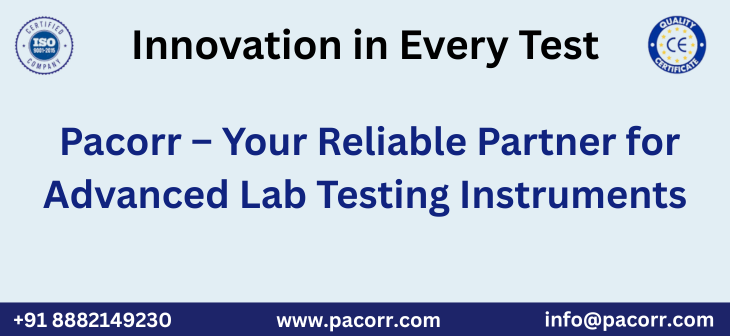
When it comes to ensuring product safety during transportation, Pacorr stands out as a leading name in the field of testing instruments, particularly with its advanced Vibration Table technology. For industries relying on packaging and shipping, the risk of transit damage remains a persistent concern, causing not only financial losses but also reputational setbacks. The Vibration Table offered by Pacorr has become an indispensable tool in the transit damage analysis process, enabling manufacturers, packaging specialists, and logistics providers to minimize risk, enhance quality control, and deliver products safely to their final destinations. In this in-depth article, we explore the importance of the Vibration Table in transit damage analysis, highlighting its crucial role, working mechanism, benefits, standards, and its undeniable value in the packaging and logistics sectors.
Understanding Transit Damage and Its Implications
Transit damage refers to the deterioration or breakage of products or their packaging while being moved from the manufacturer to the end user. Whether the journey is local or global, products face a range of hazards—vibration, shock, compression, humidity, and temperature fluctuations—all of which can result in significant losses. For many industries such as food and beverages, electronics, automotive parts, pharmaceuticals, and consumer goods, a single damaged shipment can mean lost sales, dissatisfied customers, and increased returns.
This is where transit damage analysis plays a vital role. By simulating real-world transport conditions in a controlled environment, businesses can proactively identify weaknesses in their packaging design and materials. Among all the testing methods available, vibration testing using a Vibration Table has proven to be the most accurate for replicating the actual stresses encountered during road, rail, sea, or air transit.
Pacorr Vibration Table: An Overview
Pacorr's Vibration Table is engineered to simulate the vibration stresses that packages and products endure during their transportation cycle. Designed with precision, this testing instrument can reproduce a range of frequencies and amplitudes, enabling users to replicate different transit routes and conditions. By subjecting test specimens to controlled vibration patterns, users can evaluate packaging durability, product integrity, and the ability of protective materials to absorb and dampen mechanical shocks.
Why Is the Vibration Table Essential for Transit Damage Analysis?
1. Realistic Simulation of Transit Conditions
The greatest advantage of using a Vibration Table is its ability to mimic the actual vibrations that occur during transport. Unlike manual drop tests or impact tests, the Vibration Table can create sustained, repetitive motion similar to what a package would experience in the back of a delivery truck, train, or cargo ship. This realistic simulation is crucial for identifying weak points in packaging that may otherwise go undetected until products are already in the hands of customers.
2. Enhancing Packaging Design and Material Selection
Vibration testing provides actionable insights into how various packaging materials and designs respond to transit stresses. Engineers can experiment with different box structures, cushioning materials, and sealing methods, using the data from vibration tests to select optimal solutions. The result is improved packaging performance, cost savings from reduced material waste, and increased customer satisfaction.
3. Reducing Costs from Product Returns and Claims
Transit damage is a leading cause of product returns and warranty claims, costing companies millions annually. With regular vibration testing using Pacorr's equipment, businesses can detect and resolve packaging flaws before large-scale distribution, drastically reducing the frequency of damage-related claims and associated costs.
4. Compliance with International Standards
Many industries must comply with recognized transit testing standards such as ASTM D999, ISTA 1A, and ISO 2247. The Pacorr Vibration Table is built to meet and exceed these standards, providing reliable and repeatable results for certification and audit requirements. This not only assures quality but also helps businesses demonstrate due diligence to regulatory bodies and stakeholders.
How Does a Vibration Table Work?
A Vibration Table functions by mounting the test specimen—usually a packed product or shipping container—onto a flat, motorized platform. The machine is programmed to oscillate at specific frequencies and amplitudes, simulating the motion encountered during actual transit. The test duration, intensity, and motion profile can be customized based on the expected shipping conditions.
Typical Steps in Vibration Testing:
- Prepare the package or product as it would be shipped.
- Secure the item on the Vibration Table using clamps or straps if necessary.
- Select the appropriate test profile, frequency range, and duration based on the product type and shipping method.
- Start the test and monitor the package for movement, displacement, or signs of damage.
- Inspect the product and packaging after the test for evidence of structural failure, leakage, or cosmetic defects.
Benefits of Using Pacorr Vibration Table for Transit Damage Analysis
Improved Product Safety
By exposing packages to simulated transit conditions, companies can ensure their products are resilient enough to withstand real-world transportation hazards.
Data-Driven Decision Making
The ability to collect precise data on how products and packaging perform under stress leads to more informed decisions regarding material selection, design changes, and overall supply chain strategy.
Faster Product Development Cycles
With quick and repeatable testing, design teams can iterate rapidly, moving from concept to production with confidence that their packaging meets required durability benchmarks.
Brand Reputation Protection
Consistently delivering products in perfect condition boosts customer confidence and builds brand loyalty—two factors that are increasingly important in today’s competitive market.
Sustainability Gains
Vibration testing can help optimize packaging by identifying opportunities to use less material without compromising safety. This supports eco-friendly initiatives and reduces environmental impact.
Applications of Vibration Table in Different Industries
- Food & Beverage: Ensuring that bottles, cans, and packaged foods arrive intact, free from leaks and breakage.
- Pharmaceuticals: Verifying that medicines and medical devices remain uncompromised during transit, critical for patient safety.
- Consumer Electronics: Preventing costly damages to sensitive equipment due to shocks and vibration.
- Automotive: Testing packaging for parts and assemblies to avoid delays in supply chains due to damaged components.
- E-commerce and Retail: Protecting a wide variety of shipped goods, improving the customer experience, and reducing returns.
Features That Make Pacorr Vibration Table Stand Out
- Customizable Test Profiles: Supports a range of motion frequencies and amplitudes.
- User-Friendly Controls: Easy programming and monitoring for precise control.
- Robust Construction: Durable design ensures long-term reliability and repeatable results.
- High Accuracy Sensors: Provides detailed data for in-depth analysis of packaging performance.
Best Practices for Effective Transit Damage Analysis Using Vibration Table
- Replicate Actual Shipping Scenarios: Use data from real shipping routes to program the Vibration Table for the most accurate simulations.
- Combine with Other Tests: Pair vibration testing with drop, compression, and environmental tests for a comprehensive assessment.
- Document Results: Keep detailed records of test parameters and outcomes to guide future packaging improvements and for compliance documentation.
- Regular Calibration: Ensure the Vibration Table is calibrated and maintained according to manufacturer specifications for accurate results.
- Iterative Testing: Test early and often in the product development cycle to catch issues before mass production.
Conclusion: Why Every Modern Supply Chain Needs Pacorr Vibration Table
The role of the Pacorr Vibration Table in transit damage analysis is now more crucial than ever, as global supply chains become more complex and customer expectations for flawless delivery continue to rise. Investing in advanced vibration testing is not just about preventing losses—it is a proactive strategy for quality assurance, customer satisfaction, and long-term business success. By integrating vibration analysis into their quality control processes, companies gain a competitive edge, reduce costs, and deliver products with confidence, every time.
FAQs: Vibration Table in Transit Damage Analysis
Q1. What is a Vibration Table used for in packaging?
A Vibration Table is used to simulate the vibrations that products and packages experience during transportation, helping manufacturers identify and eliminate potential weaknesses in packaging design.
Q2. Which standards apply to vibration testing?
Key standards include ASTM D999, ISTA 1A, and ISO 2247. Always ensure your testing complies with relevant industry requirements.
Q3. How does vibration testing reduce product returns?
By revealing weaknesses before products are shipped, vibration testing enables improvements that minimize the risk of damage, leading to fewer returns and claims.
Q4. Can vibration testing help reduce packaging material costs?
Yes, by optimizing design through testing, manufacturers can use less material while maintaining product safety, supporting both cost savings and sustainability.
Thanks to Pacorr Testing instruments, we have all the required quality testing instruments that have helped us to ensure the best quality delivered to our clients.

Danish
Fair Exports Pvt. Ltd.

